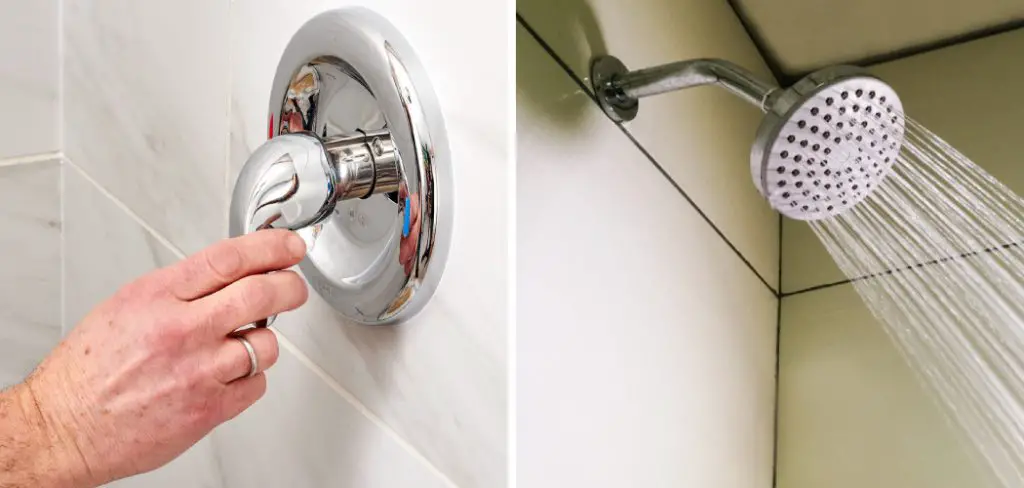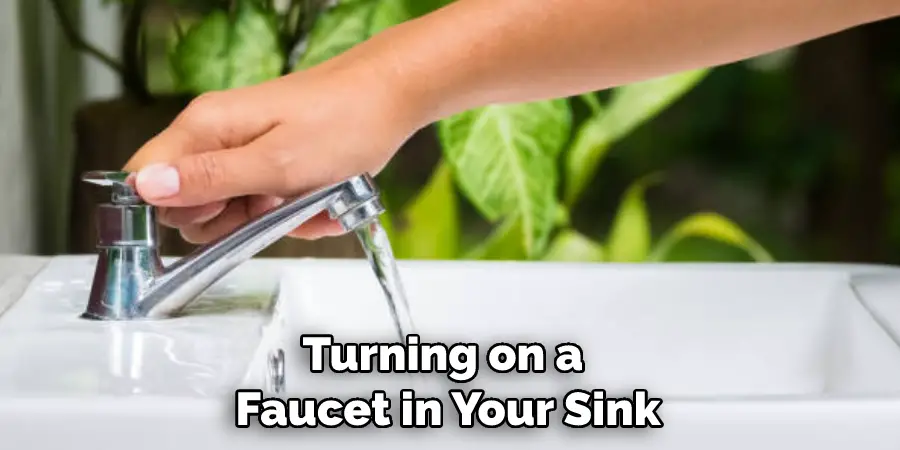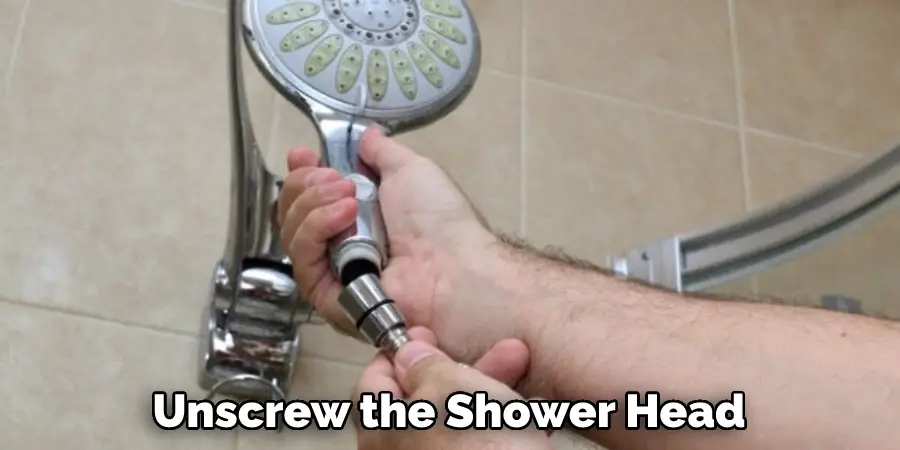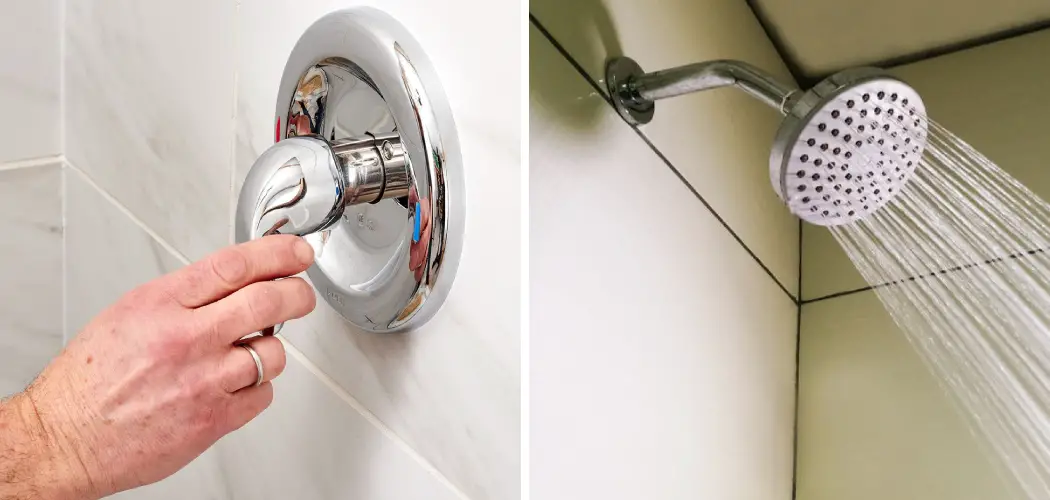Do you want to learn how to easily turn on the shower head in your bathroom? Setting up a comfortable, relaxing showering experience isn’t always straightforward – especially if you don’t know how your particular model works. But never fear – this guide is here! Let’s go through all the steps on how to turn on shower head so that you can get the most out of your shower time and save money at the same time by avoiding expensive plumber bills. In no time, you will have figured out how to turn on the shower head correctly and enjoy hot water each day with ease!

Why Will My Shower Head Not Turn on?
Before diving into how to turn on the shower head, let’s take a moment to understand why it may not be functioning properly. There are a few common reasons for this issue, and they include:
1. Broken Handle:
If your shower handle is broken or does not move, there may be an issue with the internal mechanism that needs to be replaced.
2. Corroded Pipes:
If the pipes of your shower are corroded, they may reduce the water pressure and make it difficult to turn on the water.
3. Faulty Valves:
Faulty valves can make it impossible for water to flow through them, so use a valve repair kit if needed.
10 Methods How to Turn on Shower Head
1. Check the Water Pressure.
The first thing you’ll want to do is make sure that your water pressure is high enough to turn on the shower head. You can check this by turning on a faucet in your sink and seeing how strong the water flow is. If the water pressure is low, you may need to adjust your home’s water pressure regulator. Although this can be a slightly complicated process, you can easily find instructions online that will guide you through the steps.

2. Remove Any Debris from the Shower Head.
If there is any dirt or debris clogging up the shower head, this can prevent water from flowing through it properly. To clean the shower head, simply remove it from the shower and soak it in a bowl of vinegar for a few hours. Then, use a toothbrush to scrub away any remaining dirt or debris. Once the head is clean, you can reattach it to the shower and turn on the water to test its performance. Finally, make sure all of the connections are secure before you use the shower again. However, if water still isn’t flowing through the shower head properly, it may be time to replace it with a new one.
3. Check the Showerhead for Mineral Deposits.
Over time, mineral deposits can build up on your shower head and prevent water from flowing through it properly. To remove these deposits, simply soak the shower head in a bowl of vinegar for a few hours and then scrub it with a toothbrush. If the deposits are particularly stubborn, you can purchase a special cleaning solution designed to remove them.
Once cleaned, your showerhead should be able to provide a much better water flow. You should repeat this process every few months to keep your shower head performing optimally.
4. Replace the Washer in the Shower Head.
If the washer in your shower head is worn out, this can prevent water from flowing through it properly. To replace the washer, simply unscrew the shower head and remove the old washer. Then, screw on a new washer and reattach the shower head to the pipe.
Test the water flow to make sure it is flowing properly. If not, you may need to adjust the washer or screw it tighter. If you have any issues, you can contact a plumber for help. Although this is a simple fix, it can help to improve the water pressure and flow in your shower.

5. Clean or Replace the Aerator in Your Faucet.
The aerator is a small screen that helps to regulate water flow in your faucet. Over time, this screen can become clogged with dirt and debris, which can reduce water flow and prevent your shower head from working properly. To clean the aerator, simply remove it from your faucet and soak it in a bowl of vinegar for a few hours before scrubbing it with a toothbrush. If cleaning doesn’t work, you’ll need to replace the aerator altogether.
6. Adjust the Water Temperature Valve Under Your Sink.
If you’re having trouble getting hot water to flow through your shower head, it may be because the water temperature valve under your sink is turned too low. To adjust this valve, simply turn it clockwise until you reach your desired water temperature.
Be careful not to turn it too high, or you may risk scalding yourself. You can also consider installing a thermostatic mixing valve between the hot and cold water lines to regulate the temperature of your shower. This will ensure that you always have a safe, comfortable temperature and prevent accidental burns. With a few simple adjustments, you can have hot water flowing in no time. Enjoy your shower!
7. Check for Leaks in the Shower Head Pipe.
If you’re having trouble getting hot water to flow through your shower head, it may be because there is a leak in the pipe that connects your shower head to the water supply. To check for leaks, turn off the main water supply and inspect all of the components of your shower head pipe for signs of leakage or damage. If you find any, you’ll need to repair or replace them before continuing.
You may also need to check the seals around your pipes as well to make sure they are still intact. Once you have done that, turn the water back on and see if the problem has been resolved. If not, you may need to look into further plumbing services to identify and repair any underlying problems.

8. Adjust the Water Pressure Regulator Valve Under Your Sink.
If you still can’t get hot water flowing through your shower head after adjusting the temperature valve and checking for leaks, it may be because your home’s water pressure regulator is set too low. To adjust this valve, turn it counterclockwise until you reach your desired water pressure.
Make sure to check the flow of water from both your cold and hot water sources before turning it too high, as you may end up with a shower that is too hot or cold. Once you’ve adjusted the valve, take a shower and check it for temperature accuracy. If all is well, your problem should now be solved!
9. Replace the Entire Shower Head Assembly.
If all else fails, you may need to replace the entire shower head assembly in order to get hot water flowing through it again. This is a fairly simple job that can be done with basic tools and supplies from your local hardware store.
Just make sure that you buy a shower head of the same size and type as your current one in order to ensure a proper fit. Once you have the new assembly ready to go, simply unscrew the old one and screw in the new one. After completing this task, you should have hot water flowing through your shower again.
10. Call in an Expert Plumber to Help You Out.
If all else fails, don’t hesitate to call a professional plumber who can help diagnose the issue and provide you with an effective solution. They have the expertise and tools necessary to identify and fix any plumbing problems in your home, so they are definitely your best option if you’re having trouble getting hot water flowing through your shower head.
Remember to ask questions and get a reliable estimate of the cost before allowing them to start any repairs. Be sure to also confirm that they are licensed, bonded, and insured so that you can rest assured knowing your plumbing is in good hands. With the expertise of a professional plumber, you’ll have hot water running through your shower head in no time.
How Do I Turn My Shower Head on without a Tab?
If your shower head doesn’t have a pull tab or switch to turn it on, there are a few simple ways you can get hot water flowing through it. The first option is to open the water supply line that runs from the pipes behind your bathroom wall to the shower head.
This will require you to manually move the supply line lever into the “on” position. Another option is to use a metal spanner wrench or adjustable pliers to turn the valve in your shower head counterclockwise until the hot water starts flowing.

Conclusion
So, the next time you go to take a shower and can’t figure out how to turn on the water, remember these three easy steps on how to turn on shower head! And if you’re ever in a hotel room and can’t find the knob, don’t panic. The same process will work for those showers too. With this knowledge, you’ll be able to start your day off feeling refreshed and ready to tackle whatever comes your way.

